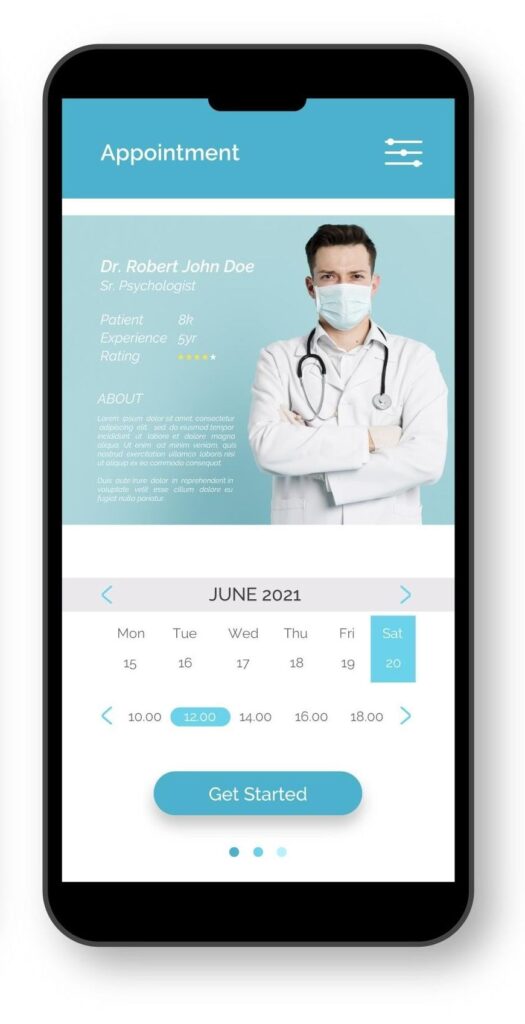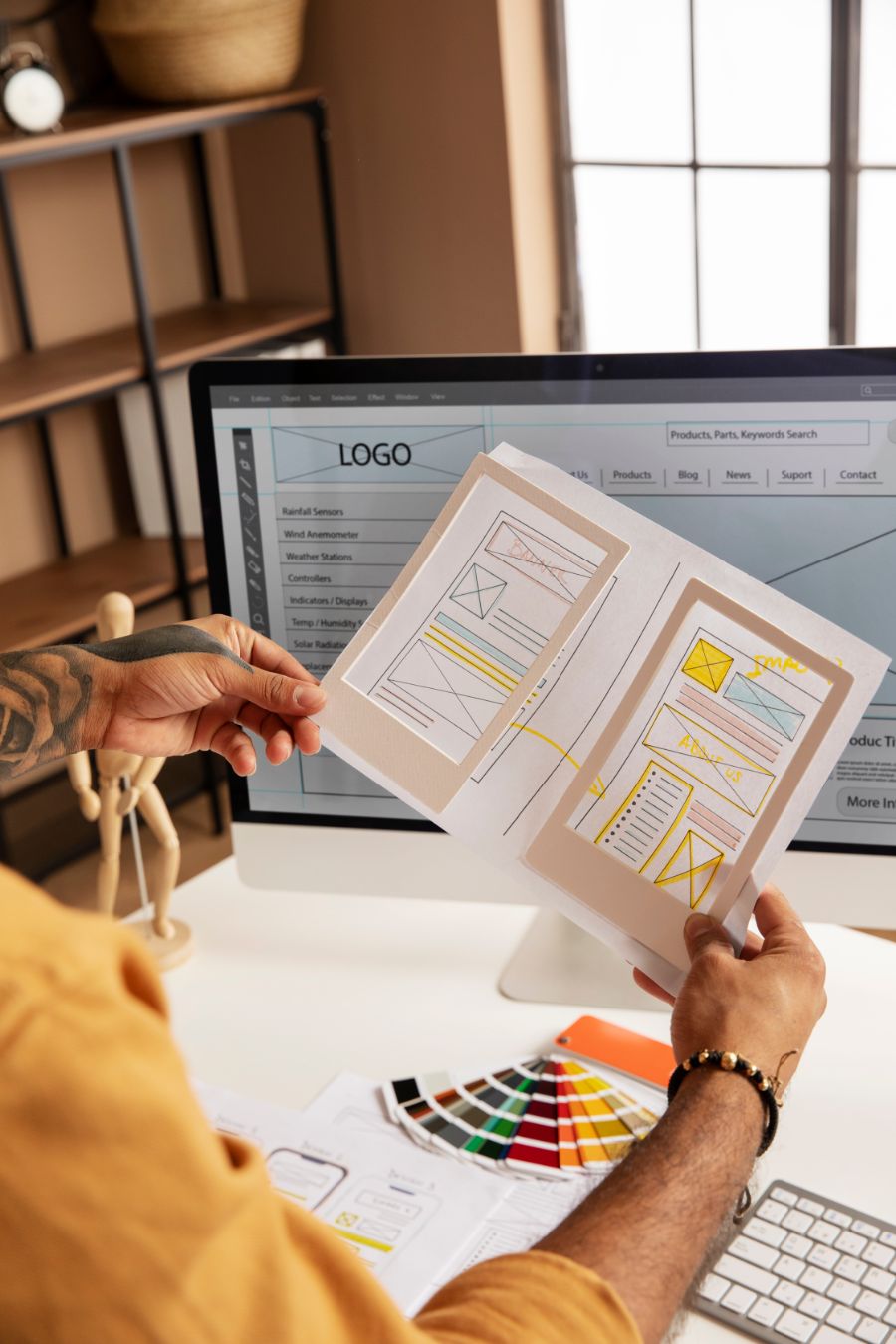By prioritizing the needs, preferences, and behaviors of end-users, organizations can create digital experiences that resonate deeply, transcending mere functionality to deliver true value. Let’s dive in.
creating websites that prioritize user experience (UX) by incorporating intuitive navigation, accessibility features, and responsive design enhance engagement and retention.
In today’s digital landscape, where user experience reigns supreme, embracing a user-centric design approach has become an imperative for businesses seeking to captivate and retain their audience. This holistic methodology not only enhances usability but also fosters an emotional connection with customers, ultimately driving engagement, loyalty, and profitability. By prioritizing the needs, preferences, and behaviors of end-users, organizations can create digital experiences that resonate deeply, transcending mere functionality to deliver true value.
Understanding User-Centric Design
User-centric design, often referred to as user-centered design (UCD) or human-centered design (HCD), is a design philosophy that places the user at the epicenter of the product development process. Unlike traditional design approaches that focus primarily on business goals and technological capabilities, user-centric design prioritizes the user’s perspective, ensuring that the final product aligns seamlessly with their needs, expectations, and mental models.
This user-focused mindset permeates every phase of the design process, from initial research and ideation to prototyping, testing, and iterative refinement. By actively involving users throughout the journey, designers gain invaluable insights that inform the creation of intuitive, accessible, and delightful experiences.
The Cornerstones of User-Centric Design
To fully embrace the user-centric design philosophy, it is essential to understand and implement its foundational principles. These guiding tenets serve as the bedrock upon which successful user experiences are built, ensuring that the end product resonates deeply with its intended audience.
1. User Empathy: The Driving Force
Empathy lies at the heart of user-centric design, as it enables designers to step into the shoes of their users, comprehending their motivations, pain points, and emotional states. By cultivating a deep understanding of the user’s context, goals, and behaviors, designers can craft solutions that seamlessly integrate into their lives, addressing their needs in a meaningful and intuitive manner.
2. Collaborative Approach: Harnessing Collective Intelligence

User-centric design thrives on collaboration, fostering an environment where diverse perspectives converge to create exceptional experiences. By actively involving users, stakeholders, and cross-functional teams throughout the design process, organizations can leverage collective intelligence, ensuring that the final product reflects a harmonious synthesis of insights, expertise, and creativity.
3. Iterative Refinement: Embracing Continuous Improvement
Perfection is a journey, not a destination, and user-centric design embraces this philosophy wholeheartedly. Through an iterative process of prototyping, testing, and refining, designers can continuously gather user feedback, identify areas for improvement, and incrementally optimize the user experience. This iterative cycle ensures that the product evolves in tandem with changing user needs and technological advancements, maintaining its relevance and resonance over time.
4. Accessibility and Inclusivity: Designing for All
User-centric design champions accessibility and inclusivity, recognizing that every user is unique, with their own set of abilities, preferences, and cultural backgrounds. By proactively considering diverse user needs, designers can create experiences that are inclusive, removing barriers and enabling seamless interactions for individuals with varying abilities, languages, and contexts.
5. Holistic Approach: Integrating User Experience Across Touchpoints
In today’s omnichannel landscape, users interact with brands through multiple touchpoints, both digital and physical. User-centric design acknowledges this reality and strives to create cohesive experiences that transcend individual channels or platforms. By adopting a holistic approach, designers can ensure consistent and seamless interactions, regardless of the user’s entry point or preferred mode of engagement.

The User-Centric Design Process: A Roadmap to Success
In the ever-evolving digital realm, where user experience reigns supreme, embracing user-centric design is no longer an option but a necessity for businesses seeking to thrive. By placing the user at the heart of the design process, organizations can create experiences that transcend mere functionality, forging emotional connections and fostering lasting loyalty.
The principles of user-centric design, such as user empathy, collaborative approaches, iterative refinement, accessibility, and inclusivity, serve as guideposts on this transformative journey. By following a structured process that involves extensive user research, persona development, ideation, prototyping, testing, and continuous improvement, designers can unlock the true potential of user-centric design.
The tangible benefits of this approach are undeniable, ranging from increased user engagement and retention to enhanced usability and productivity, competitive differentiation, reduced development costs, and improved accessibility and inclusivity. Ultimately, by prioritizing the user’s needs and preferences, organizations can create products and services that resonate deeply, fostering brand loyalty, driving growth, and achieving long-term success in an increasingly competitive and user-centric digital landscape.
Embrace the power of user-centric design and unlock a world of possibilities where exceptional user experiences become the catalyst for innovation, growth, and lasting success.
The Tangible Benefits of User-Centric Design
Embracing a user-centric design approach yields numerous benefits that transcend mere aesthetics and functionality. By prioritizing the user’s needs and preferences, organizations can unlock a wealth of advantages that directly impact their bottom line and long-term success.
1. Increased User Engagement and Retention
When users interact with products or services that have been meticulously crafted with their needs in mind, they are more likely to engage deeply and remain loyal to the brand. User-centric design fosters a sense of resonance and emotional connection, making users feel understood, valued, and appreciated. This heightened engagement and retention can translate into improved customer lifetime value and reduced churn rates.
2. Enhanced Usability and Productivity
By eliminating usability barriers and streamlining workflows, user-centric design empowers users to accomplish their tasks efficiently and intuitively. This increased productivity not only enhances the overall user experience but also contributes to cost savings and improved operational efficiency for businesses, as users can complete tasks more quickly and with fewer errors or frustrations.
3. Competitive Differentiation
In today’s crowded marketplace, delivering exceptional user experiences can be a powerful differentiator. By prioritizing user-centric design, organizations can set themselves apart from competitors, fostering brand loyalty and attracting new customers who value intuitive, delightful, and tailored experiences. This competitive advantage can translate into increased market share, revenue growth, and long-term sustainability.
4. Reduced Development Costs and Time-to-Market
By involving users early in the design process and iterating based on their feedback, organizations can minimize the risk of costly redesigns and reworks further down the line. User-centric design helps identify and address potential issues early on, ensuring that the final product aligns with user needs from the outset. This proactive approach can lead to reduced development costs, shorter time-to-market, and a more efficient allocation of resources.
5. Improved Accessibility and Inclusivity
By prioritizing accessibility and inclusivity, user-centric design ensures that products and services are accessible to a diverse range of users, regardless of their abilities, cultural backgrounds, or preferences. This inclusive approach not only expands the potential user base but also demonstrates a commitment to social responsibility and ethical business practices, enhancing brand reputation and customer loyalty.
Embracing User-Centric Design: A Transformative Journey
Adopting a user-centric design approach is not merely a tactical shift but a transformative journey that requires a fundamental change in mindset and organizational culture. It demands a deep commitment to understanding and empathizing with users, fostering collaboration across disciplines, and embracing an iterative and data-driven approach to continuous improvement.
While the journey may present challenges, such as overcoming organizational silos, securing buy-in from stakeholders, and allocating sufficient resources, the rewards are well worth the effort. By prioritizing the user’s needs and experiences, organizations can create products and services that resonate deeply, fostering loyalty, driving growth, and ultimately achieving long-term success in an increasingly competitive and user-centric digital landscape.
Consider these last thoughts
In the ever-evolving digital realm, where user experience reigns supreme, embracing user-centric design is no longer an option but a necessity for businesses seeking to thrive. By placing the user at the heart of the design process, organizations can create experiences that transcend mere functionality, forging emotional connections and fostering lasting loyalty.
The principles of user-centric design, such as user empathy, collaborative approaches, iterative refinement, accessibility, and inclusivity, serve as guideposts on this transformative journey. By following a structured process that involves extensive user research, persona development, ideation, prototyping, testing, and continuous improvement, designers can unlock the true potential of user-centric design.
The tangible benefits of this approach are undeniable, ranging from increased user engagement and retention to enhanced usability and productivity, competitive differentiation, reduced development costs, and improved accessibility and inclusivity. Ultimately, by prioritizing the user’s needs and preferences, organizations can create products and services that resonate deeply, fostering brand loyalty, driving growth, and achieving long-term success in an increasingly competitive and user-centric digital landscape.
Embrace the power of user-centric design and unlock a world of possibilities where exceptional user experiences become the catalyst for innovation, growth, and lasting success.



